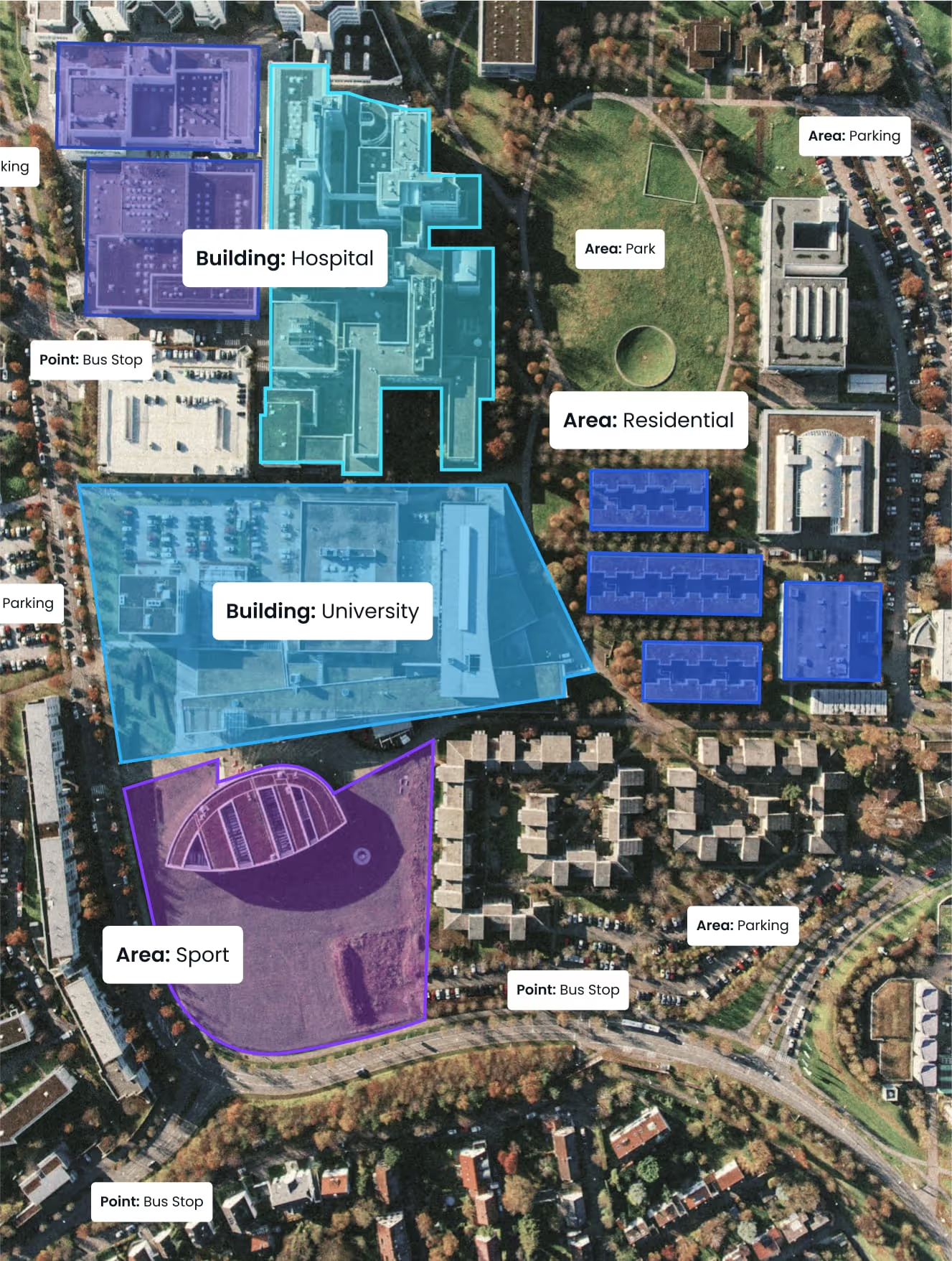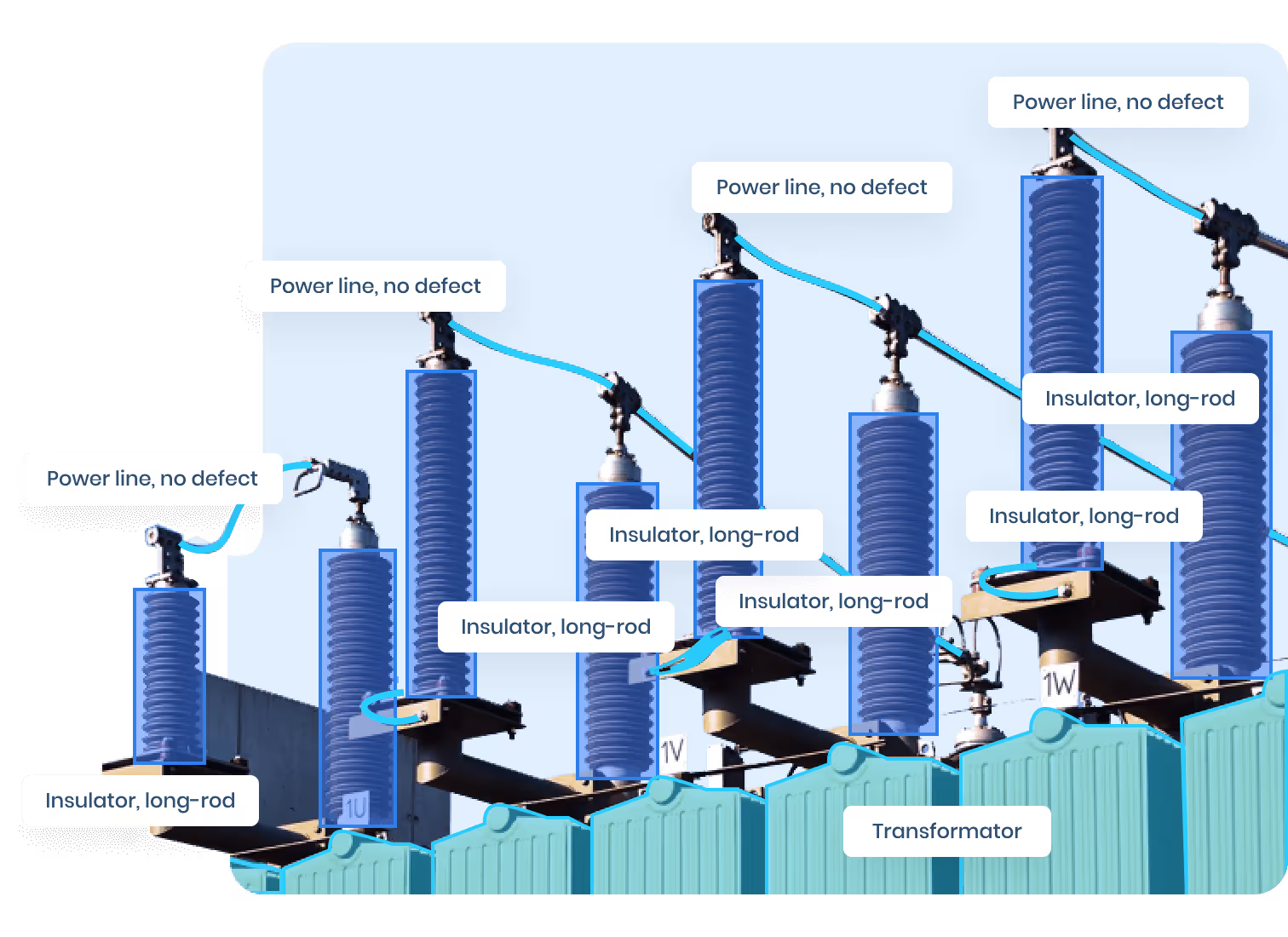Why Synthetic Data Matters for ADAS
ADAS models thrive on visual data—think lane markings, pedestrians, vehicles, traffic signs, or inclement weather conditions. Capturing enough of these edge cases in the real world is slow, expensive, and sometimes impossible. That’s where synthetic data comes in.
What is synthetic data in ADAS?
Synthetic data is artificially generated using game engines or procedural simulation platforms to mimic real-world driving conditions. It can simulate a rainy night in Tokyo, a snowy highway in Canada, or a pedestrian crossing in suburban Germany—all in minutes.
Benefits driving its adoption:
- Cost-efficiency: Eliminate the need for fleet-wide data collection campaigns.
- Speed: Generate thousands of edge-case scenarios instantly.
- Annotation automation: Labels (e.g., bounding boxes, segmentation masks) are created automatically and flawlessly.
- Ethical safety: No real humans need to be put at risk to collect dangerous corner-case data.
Industry leaders such as Waymo and NVIDIA DRIVE Sim use simulation to push their models to new limits while ensuring safety and scalability.
When Real-World Data Falls Short
Despite the explosion of sensor-equipped vehicles and the abundance of driving footage available today, real-world datasets often leave mission-critical gaps in coverage. For teams building Advanced Driver Assistance Systems (ADAS), relying solely on real-world data introduces several systemic limitations that can’t be overlooked.
Infrequent Edge Cases Are a Data Dead-End
Some of the most crucial scenarios in ADAS—such as a child running across the street, black ice on an unlit road, or a vehicle flipping over—are thankfully rare in the real world. But rarity also means data scarcity. Training models on real-world datasets alone often results in a heavy bias toward commonplace events: clear skies, well-marked roads, daylight traffic. The result? AI systems that excel in average conditions but fail in critical edge cases.
These edge cases are precisely where lives are saved or lost. Unfortunately, gathering such data ethically, safely, and at scale is next to impossible with real-world collection alone.
Cost, Time, and Logistics Are a Barrier
Creating a comprehensive ADAS training set via real-world collection involves:
- Recruiting and managing fleets of test vehicles
- Equipping them with costly multi-sensor arrays
- Sending them across diverse environments and seasons
- Waiting months (or years) to encounter rare conditions
- Manually annotating each frame with high precision
This process doesn’t just slow innovation—it makes it financially inaccessible for smaller teams, startups, and academic researchers. Synthetic data, in contrast, can replicate an entire year of environmental variance in a week.
Real-World Data Is Messy and Inconsistent
Annotations in real-world datasets are typically done by human labelers. While annotation services have improved dramatically, human error and subjectivity remain serious concerns:
- Bounding boxes may be slightly off
- Occluded objects may be inconsistently labeled
- Definitions may shift between labeling teams or geographies
For ADAS models that depend on pixel-perfect accuracy and semantic consistency, these errors can cause brittle behaviors, false positives, and unpredictable model outputs. In synthetic datasets, annotations are generated with mathematical precision—no missed labels, no inconsistencies.
Regional Bias Undermines Generalization
A common pitfall in ADAS dataset collection is geographic overfitting. A model trained predominantly on footage from sunny California or the German autobahn may struggle in Bangkok traffic, Brazilian favelas, or Canadian snowstorms.
Different regions vary widely in:
- Road infrastructure
- Signage and typography
- Pedestrian density and behavior
- Types of vehicles and their markings
- Lighting conditions (e.g., tunnel-heavy cities like Paris)
Collecting globally representative real-world datasets is a Herculean task. Simulation platforms can close this gap by procedurally generating region-specific data tailored to your target markets, without ever leaving your office.
Building a Smart Annotation Strategy with Synthetic Data
To get the most out of synthetic data, your annotation strategy should be carefully crafted—not all synthetic data is created equal, and how you generate, curate, and combine it with real data makes all the difference.
Match Reality with Purpose
Your simulation setup should reflect your deployment environment. Training a model for an urban delivery vehicle? Focus on synthetic data mimicking narrow streets, bicycles, jaywalkers, and parked vans. Building for highway autopilot? Then go for multilane, high-speed, and dynamic lane change scenarios.
Tip: Use localization data and urban design elements to mirror your target geography.
Label Consistency Is Crucial
One of the most significant advantages of synthetic data is automated labeling. But if these labels don’t follow the same schema or level of detail as your real data, you risk confusing your model.
- Maintain consistent class definitions
- Align resolution and depth formats (especially for stereo/LiDAR blends)
- Validate pixel-level accuracy for segmentation tasks
For example, a “pedestrian” in your synthetic data must mean the exact same thing—with the same class ID, boundaries, and attributes—as in your real-world annotations.
Leverage Domain Randomization, But Don’t Overdo It
Domain randomization is a common technique used to help models generalize better. It involves introducing variability (colors, lighting, object placement) in synthetic environments.
✅ Good for:
- Making models robust to visual noise
- Preparing for unexpected real-world scenarios
⚠️ Risky when:
- Randomization leads to unnatural scenes
- Object physics or context breaks realism
The key is balance: you want diversity, not chaos.
Real-World Tradeoffs You Can’t Ignore
Despite its promise, synthetic data isn’t a silver bullet. Relying too heavily on it without understanding the limitations can introduce new challenges.
The Domain Gap Is Real
Models trained purely on synthetic data often underperform when tested in real conditions. This mismatch between synthetic training and real-world inference is known as the domain gap.
Even high-fidelity simulations can fail to replicate:
- Sensor noise and blur
- Realistic shadows and occlusions
- Driver unpredictability
How to mitigate:
- Mix synthetic with real-world data for training (hybrid datasets)
- Use domain adaptation techniques (e.g., CycleGAN, style transfer)
- Fine-tune on small, high-quality real datasets before deployment
Model Overconfidence in Unreal Situations
Because synthetic environments are often too “perfect,” models may learn unrealistic patterns and become overconfident—like detecting perfectly centered, always-visible stop signs, which rarely exist in the wild.
Solution:
Introduce controlled imperfection. Use sensor simulation tools like CARLA to inject camera noise, distortions, weather artifacts, and partial occlusions into your scenes.
Scaling Doesn’t Equal Learning
Synthetic data lets you generate millions of frames. But not all frames are useful.
More data ≠ better performance
Instead of flooding your model, focus on data curation:
- Prioritize edge cases and failure points
- Annotate scenarios that reveal model blind spots
- Remove visually redundant or trivial samples
Tools like FiftyOne help visualize and filter your datasets intelligently.
Mixing Synthetic and Real Data: Smart Hybrid Workflows 🧠
To overcome the domain gap while retaining the benefits of simulation, most companies adopt hybrid workflows—a combination of synthetic and real data across stages of model development.
A Typical Hybrid Loop Might Look Like:
- Prototype training with synthetic data
➝ Train early-stage models on clean, labeled synthetic datasets - Validate on real-world validation set
➝ Identify performance gaps, blind spots, false positives/negatives - Augment with targeted synthetic edge cases
➝ Generate scenarios that fix specific errors (e.g., missed left-turn pedestrians) - Retrain with real + synthetic mix
➝ Fine-tune using transfer learning and hard samples - Field test on real-world fleet data
➝ Close the loop with real-world feedback
This cyclical workflow is what allows synthetic data to act as a scalable assistant, not a replacement.
Annotation Governance in Simulation: Keep It Clean 🧼
Synthetic datasets don’t require traditional manual labeling, but they do require governance to ensure:
- Correct ground truth format (bounding boxes, segmentation masks, etc.)
- Label density and object diversity are balanced
- No labeling leaks—e.g., object identities visible to the AI when they wouldn’t be to a real camera
Failing to apply QA standards in simulation pipelines can result in misleading performance metrics and real-world deployment failures.
Suggested best practices:
- Establish a validation benchmark using real data
- Use QA scripts to verify annotation completeness and class balance
- Perform blind tests with human annotators on synthetic frames
Real-World Use Cases: Where Synthetic Shines
The impact of synthetic data isn't just theoretical—it’s already driving tangible results across real-world applications in automotive AI. Let’s look at key scenarios where simulation is not just helpful, but game-changing.
Training for Dangerous Scenarios (Without Real-World Risk)
Some scenarios are too dangerous to reproduce safely in real life:
- A truck jackknifing on the highway
- A child darting between parked cars
- A car spinning out on black ice
- A multi-vehicle pile-up in low visibility
Attempting to capture these situations with real vehicles would be reckless and unethical. Simulation allows ADAS teams to model these edge cases precisely—adjusting variables like speed, angle of impact, visibility, and even human reaction time.
This not only enriches the training set but also gives safety engineers a sandbox to test “what-if” scenarios under total control.
Bridging Sensor Gaps and Fusion Challenges
In real-world settings, sensors may malfunction, get obstructed, or degrade over time (e.g., fogged LiDAR, misaligned cameras). Simulators allow you to model and evaluate:
- Sensor blackouts and occlusions
- Cross-modal interference (e.g., glare in visual + LiDAR drift)
- Sensor fusion tradeoffs under environmental stress
By artificially tweaking sensor inputs in simulation, you can stress-test your sensor fusion algorithms and gain insights into failure points before deploying to a vehicle.
Pre-Launch Localization and Regulatory Adaptation
Launching a vehicle in a new market often means adapting to:
- New road layouts (roundabouts, speed bumps, toll booths)
- Region-specific traffic rules (e.g., left-hand driving in the UK, U-turn rules in India)
- Unique vehicle types (e.g., tuk-tuks in Thailand, microvans in Japan)
- Pedestrian behavior influenced by culture and local norms
Instead of flying data collection teams around the globe, synthetic environments can be modeled to reflect localized traffic ecosystems. Some advanced simulation tools even allow integration of OpenStreetMap or GIS data to match real urban layouts with centimeter accuracy.
This enables faster localization, faster deployment, and smoother regulatory validation.
Simulating Edge Environments for Off-Road or Niche Use Cases
Synthetic data is especially useful in off-road ADAS, such as:
- Mining vehicles navigating unstable terrain
- Agricultural robots identifying plant rows in changing seasons
- Military logistics under camouflage and night ops
- Emergency response vehicles in forest fires or flooded areas
In these applications, collecting real-world data is not just expensive—it’s often infeasible. Simulated data can fill the void and allow for robust model development in highly variable and difficult-to-access environments.
Accelerated Model Benchmarking and Regression Testing
Once a model is in production, updates can unintentionally degrade performance on rare cases it previously handled well. Synthetic data allows for targeted regression testing by re-running the same scenario across model versions.
Use cases include:
- Confirming safe behavior in merging scenarios
- Testing new corner detection algorithms across shadowy intersections
- Evaluating emergency braking logic under varied stopping distances
Synthetic test suites act as version-controlled benchmarks, offering a repeatable evaluation framework far superior to randomized real-world testing.
Emerging Tools and Platforms for ADAS Simulation
A growing ecosystem supports synthetic data generation, annotation, and simulation for ADAS. Some notable platforms include:
- CARLA: Open-source simulator with Python API and sensor fidelity
- LGSVL Simulator: Focused on high-fidelity sensor data for AVs
- NVIDIA DRIVE Sim: Photorealistic rendering, ray tracing
- Parallel Domain: Procedural world generation tailored to AVs
Each tool offers different advantages depending on your needs: scene control, sensor realism, scalability, or integration with reinforcement learning systems.
Final Thoughts: Use Synthetic Data Wisely, Not Blindly
Synthetic data is one of the most powerful tools in the ADAS development arsenal. It unlocks speed, safety, and scalability—but only when used with intention and control.
What really matters:
- Align your simulation with real-world use cases
- Don’t ignore domain gaps—bridge them
- Mix, match, and test with real data often
- Build annotation QA into your synthetic pipeline
The future of Autonomous Driving won’t be built on real data alone. It will be forged in simulated worlds, governed by real-world logic.
Curious to See This in Action? 👀
If you’re working on ADAS systems, autonomous fleets, or vehicle AI—and you're curious how simulation can elevate your dataset strategy—let’s connect. Whether you're building safety-critical models or trying to reduce annotation overhead, we can help design a synthetic data workflow that makes sense for your product and budget.
👉 Get in touch with our team at DataVLab for a personalized walkthrough of what’s possible with smart annotation pipelines and simulation-based training.





